Home / Bridges of Florence / Ponte Santa Trìnita
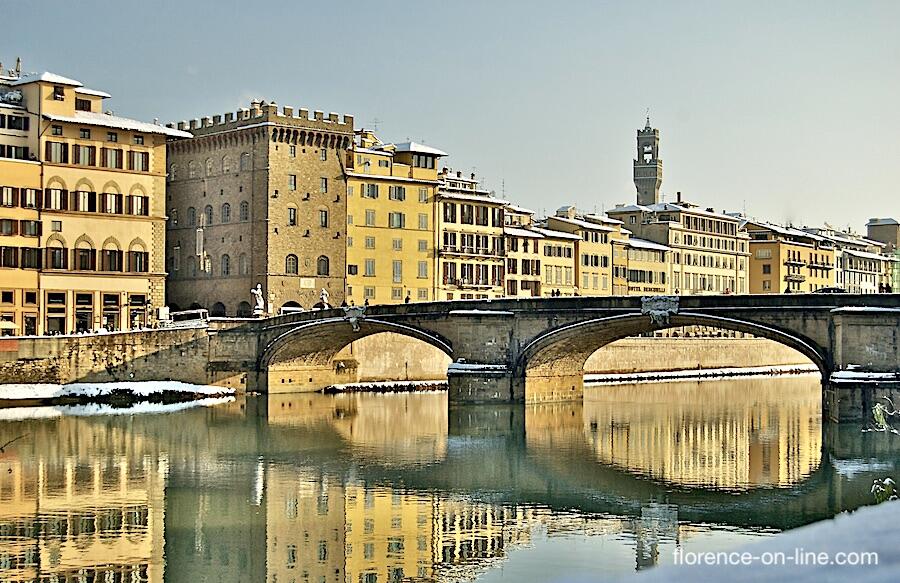
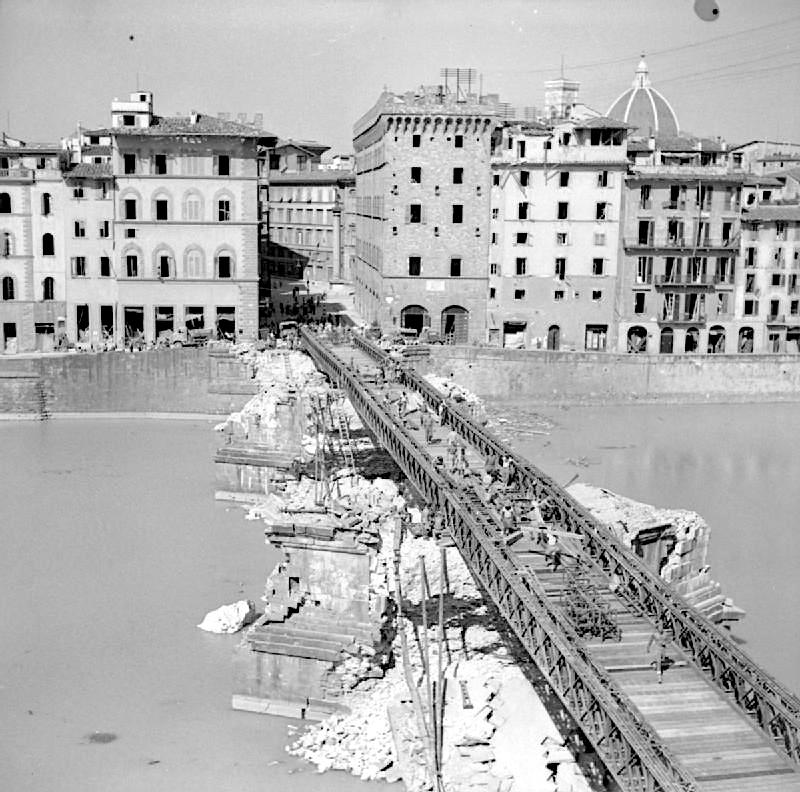
Ponte Santa Trìnita with a temporary bridge built by British forces after World War II
The bridge faced a major tragedy during World War II. As the German forces retreated from Florence in 1944, they destroyed all the bridges in the city except the famous Ponte Vecchio (supposedly they did not have it in them to destroy such a famous landmark, so instead razed the buildings on either side of the bridge to slow the advancing allied forces). Unfortunately, the Ponte Santa Trìnita was blown up. However, after the war, it was reconstructed using some of the original stones that were salvaged from the riverbed, as well as stones specially quarried from the Boboli gardens where the original stone from the bridge was sourced. This painstaking restoration was completed in 1958 under the direction of architect Riccardo Gizdulich, and engineer Emilio Brizzi.
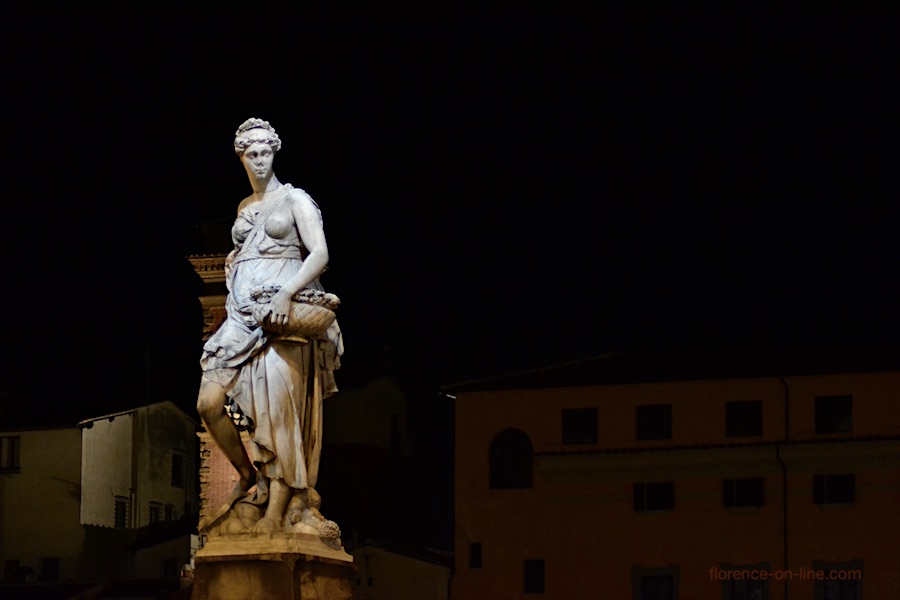
The statue of Spring, by Pietro Francavilla
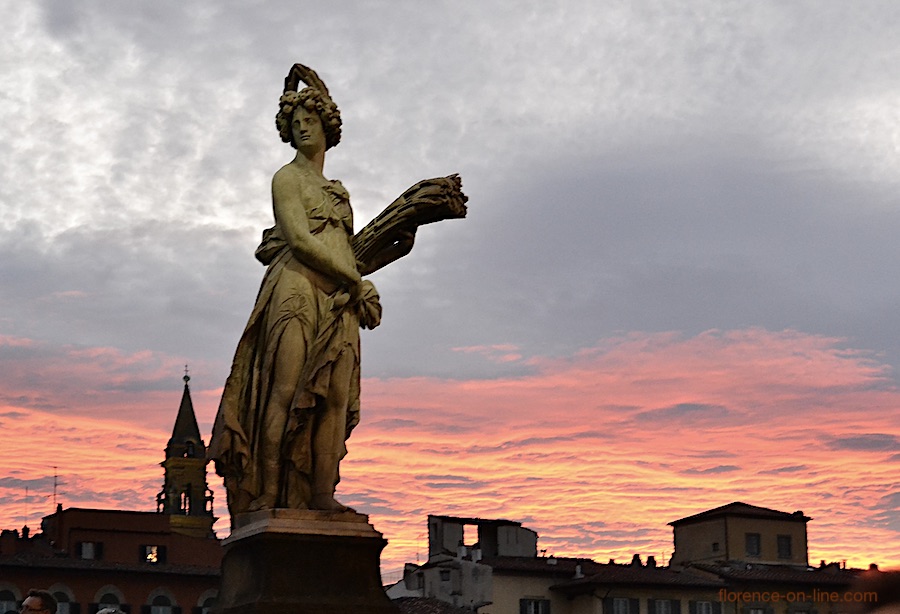
The statue of Summer, by Giovanni Caccini
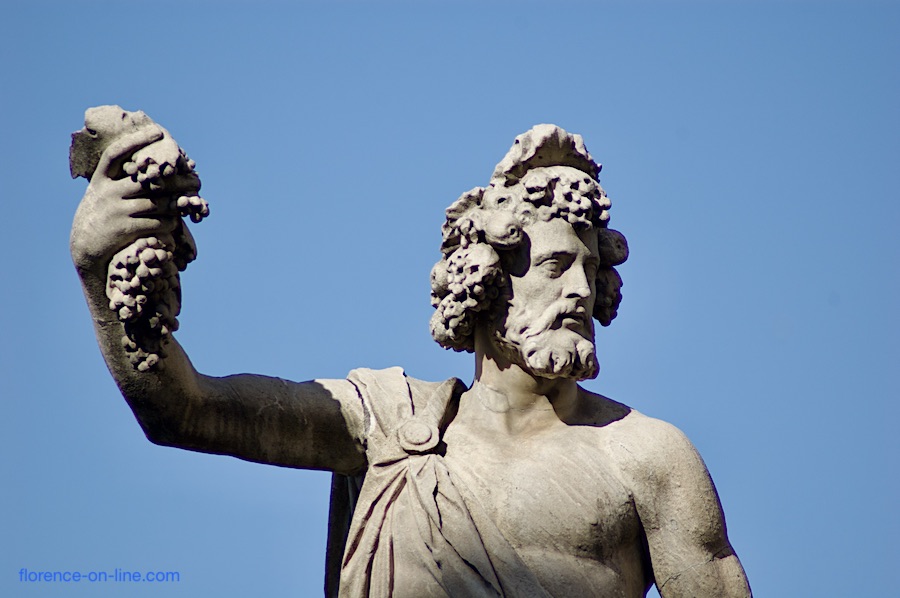
The statue of Autumn, by Giovanni Caccini
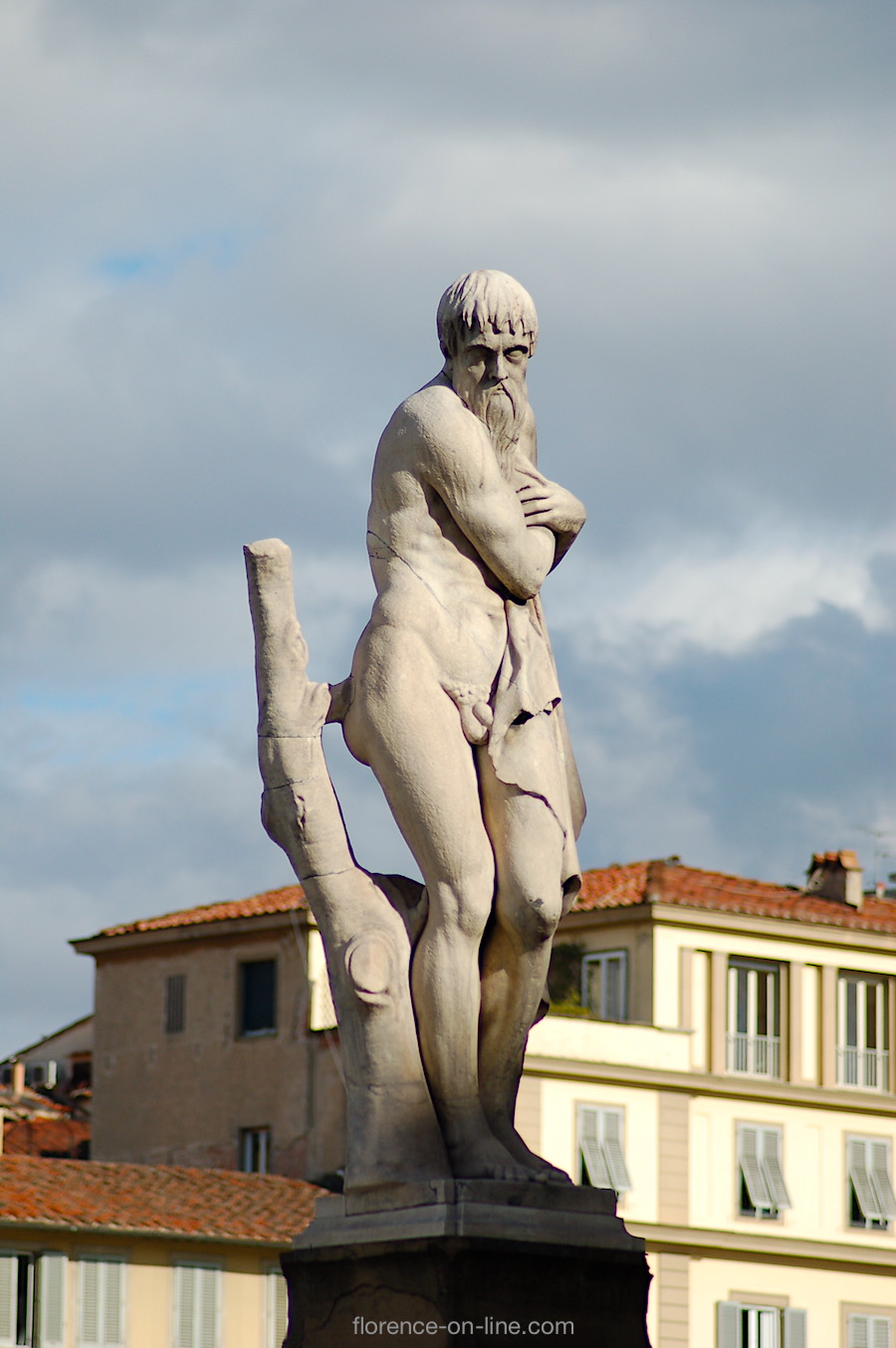
The statue of Winter, by Taddeo Landini
Another distinguishing feature of the Ponte Santa Trìnita is its elegant elliptical arches, which makes it unique compared to other bridges in Florence, and was a significant engineering achievement in the Renaissance era. The bridge is a testament to the architectural and engineering prowess of the time, and the arches in particular represent a blend of aesthetic grace and structural innovation that defines the Renaissance.
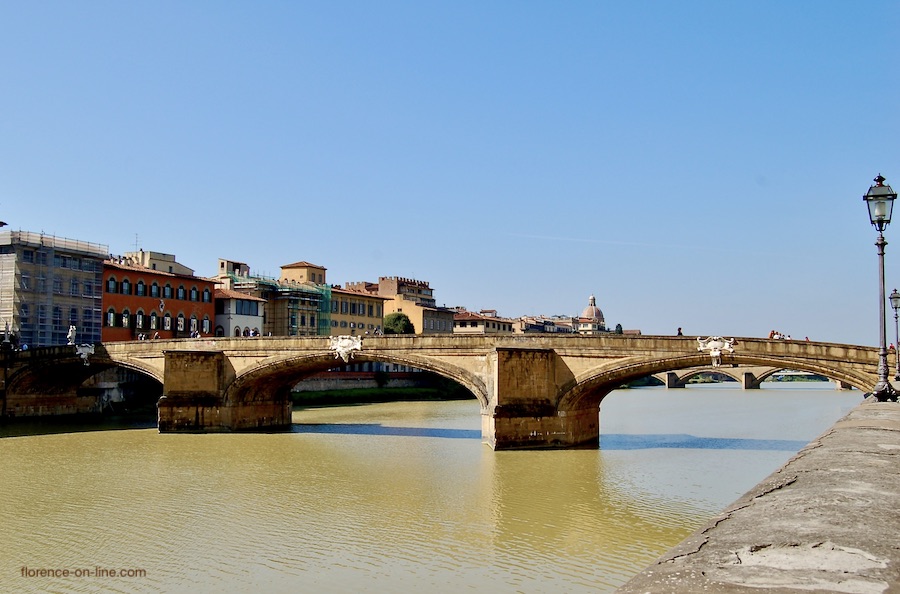
The elliptical arches of the bridge, sometimes attributed to Michelangelo
There are also several decorative medallions adorning the bridge:
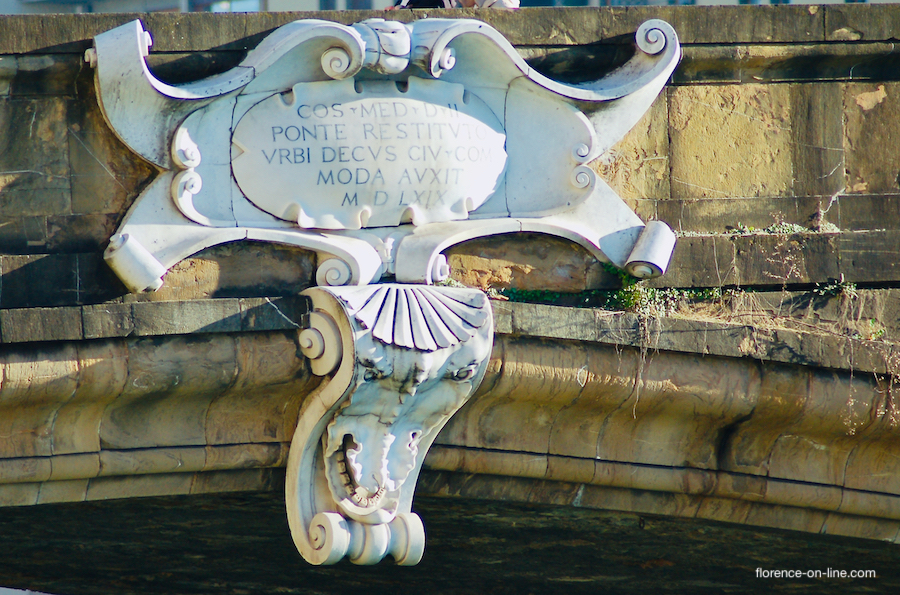
The medallion is in Latin and translates roughly to:
"Cosimo I de' Medici, having restored the bridge, increased the glory of the city, 1569"
This is a good video, in Italian:
Ponte Santa Trìnita on the map:
Ponte Santa Trìnita

The Ponte Santa Trìnita in the snow, December, 2010
The Ponte Santa Trìnita is one of the most renowned bridges spanning the Arno River in Florence, Italy. It is a stunning example of Renaissance architecture, boasting a mix of elegance and strength, and is our favorite Florentine bridge.
History of Ponte Santa Trìnita:
The first bridge built at this location dates back to 1252 and was made of wood. After being destroyed and rebuilt several times due to floods, the decision was made to build a more permanent structure. The bridge as it appears today is based on the version built by Bartolomeo Ammannati from 1567 to around 1570, under the patronage of the Grand Duke Cosimo I de' Medici.
The bridge faced a major tragedy during World War II. As the German forces retreated from Florence in 1944, they destroyed all the bridges in the city except the famous Ponte Vecchio (supposedly they did not have it in them to destroy such a famous landmark, so instead razed the buildings on either side of the bridge to slow the advancing allied forces). Unfortunately, the Ponte Santa Trìnita was blown up. However, after the war, it was reconstructed using some of the original stones that were salvaged from the riverbed, as well as stones specially quarried from the Boboli gardens where the original stone from the bridge was sourced. This painstaking restoration was completed in 1958 under the direction of architect Riccardo Gizdulich, and engineer Emilio Brizzi.
Statues of Ponte Santa Trìnita:
In addition to the graceful, flattened arches that span the river (which some attribute to Michelangelo), the bridge is also decorated with statues of the Four Seasons which appear at each corner of the bridge. The statues were added in the early 17th century and further enhance the bridge's aesthetic appeal. Autumn, holding aloft a bunch of grapes, and a nude Winter greet you as you cross the bridge from the Oltrarno, while Spring and Summer watch as the bridge deposits you onto Via Tornabuoni. The statues (or most of their parts) were also recovered from the Arno after the demolition of the bridge in 1944 at various times, and were eventually returned to their original places. The last piece recovered was the head of Spring/Primavera which was only found in 1961!



Another distinguishing feature of the Ponte Santa Trìnita is its elegant elliptical arches, which makes it unique compared to other bridges in Florence, and was a significant engineering achievement in the Renaissance era. The bridge is a testament to the architectural and engineering prowess of the time, and the arches in particular represent a blend of aesthetic grace and structural innovation that defines the Renaissance.

There are also several decorative medallions adorning the bridge:

"Cosimo I de' Medici, having restored the bridge, increased the glory of the city, 1569"
Related links:
The NY Times article on the reopening of the rebuilt bridge in 1958.This is a good video, in Italian:
Comments:
Last update:
What's New?
-
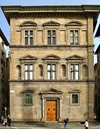
Piazza Santa Trìnita
Dec 2, 2025
-

December in Florence : Dicembre a Firenze
Dec 1, 2025
-
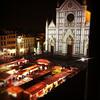
November in Florence : Novembre a Firenze
Nov 1, 2025
-

Ceramics Fair (Fiera della Ceramica)
Oct 1, 2025
-

October in Florence : Ottobre a Firenze
Oct 1, 2025
Top experiences in and around Florence:
© 2005-2025 florence-on-line.com | About | Glossary | Newsletter | Site Map
Some links to external websites may be affiliate links (hotel bookings, guide books, activities, etc.). Using these services helps to support our efforts here with no additional costs to the user (you!).
Some links to external websites may be affiliate links (hotel bookings, guide books, activities, etc.). Using these services helps to support our efforts here with no additional costs to the user (you!).